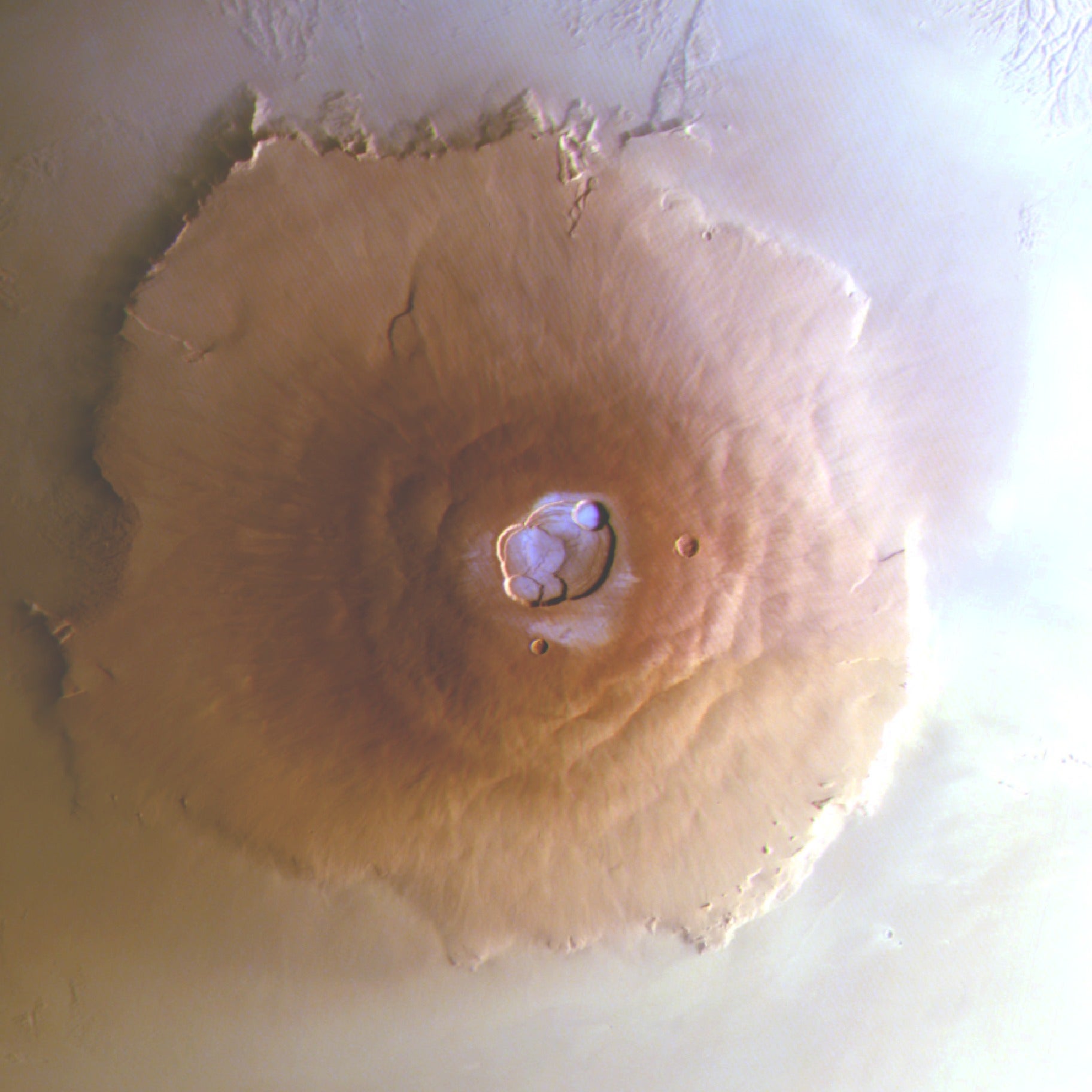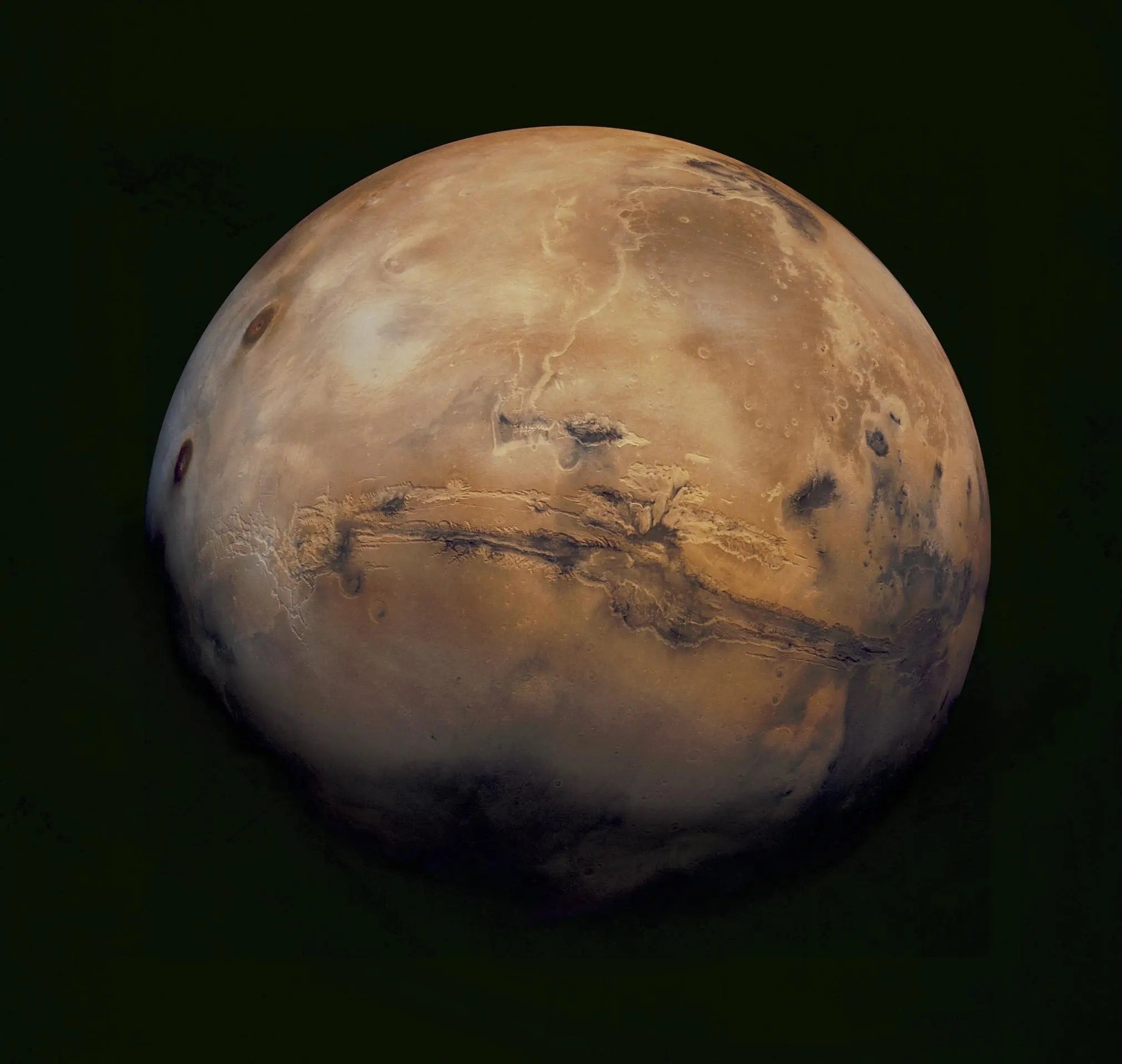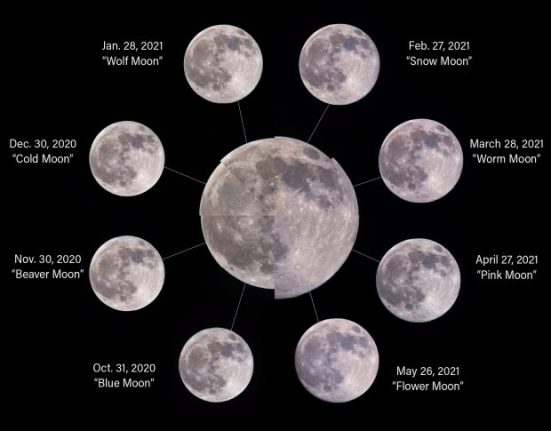
Frost (blue) covers the summit of Olympus Mons, the highest volcano in our solar system. This image was taken by ESA's Mars Express orbiter at 7:20 am local Martian time. The right side of the mountain is illuminated by the rising sun in the east. Credit: ESA/DLR/FU Berlin.
In early 2022, the then-Ph.D. Student Adomas Valantinas was at the University of Bern, sorting through thousands of images of Mars taken by the European Space Agency's (ESA) Trace Gas Orbiter (TGO) spacecraft when he noticed vast swathes of strange material near the planet's equator. Examining the images, he soon saw a pattern: The bluish deposits, which represent ice in TGO's false-color images, were covering the tops of the planet's tallest volcanoes near the parched Martian equator, where planetary scientists thought it was. Impossible for mice.
This is because between Mars' thinning atmosphere and the relatively abundant sunlight the equator receives, the region is too warm for frost to form, not only on the surface but also on the mountain tops of Mars. the Tharsis region, which is home to numerous volcanoes, including Olympus Mons., the largest in the solar system.
icy peaks
However, morning images during winter taken by two instruments on TGO and by the Mars Express orbiter show that frost briefly covers at least four colossal volcanoes: Olympus Mons, Arsia Mons, Ascraeus Mons and Ceraunius Tholus. The new ice patches, each as thin as a strand of human hair, together contain 150,000 tons of water, enough to fill 60 Olympic-sized swimming pools, the researchers estimate in a paper published June 10 in the journal. Nature Geoscience.
“Our study shows that ice water can be found in areas where you wouldn't expect it,” says Valantinas, who is now a postdoctoral fellow at Brown University. “It's a modern process; it's happening on today's Mars.”
Related: Where did all the water on Mars go?
Every day during winter, early spring and late fall, frost forms for a few hours around dawn before evaporating into the thin Martian air. While its ephemeral presence means future astronauts won't be able to use it for life support or extract it as rocket fuel, scientists say the discovery can teach them a lot about the water cycle on Mars and help them better decipher the complex atmospheric dynamics of the planet. planet.
“It's a desert planet but it still has this water cycle,” says Valantinas. “It could be that what we're seeing now with this water freeze is a remnant of this cycle that was more significant in the past.”
A unique microclimate
The morning frost was seen on the volcanoes' calderas, bowl-shaped formations that form during eruptions when magma below oozes out and the volcano walls crumble inward. Valantinas and his colleagues propose that the wind on Mars, which transports moisture from the ice-covered poles, rises up the mountain slopes and reaches the calderas, where it condenses into patches of frost. By simulating wind patterns and speeds in the area, the researchers found that wind travels at lower speeds within the caldera than in surrounding areas, allowing frost to form. “There exists a special microclimatic condition,” says Valantinas.

The team has ruled out other explanations for the freeze, such as ice from carbon dioxide molecules, which make up 95 percent of the planet's air. The temperatures inside the calderas when TGO took its images suggest that “it is too hot for carbon dioxide frost to form,” Valantinas says. Another explanation for ice could be that it forms from gases spewed by dormant volcanoes, which can then freeze to form frost, but “it would be quite difficult to explain why volcanic degassing is seasonal,” she says.
Rather, water ice from the north and south polar caps evaporates during local summers, traveling to the opposite hemisphere and traversing the equatorial regions, where the Tharsis volcanic mountain range resides. Valantinas and his team suggest that some of this water is trapped in volcanoes, which reach heights up to twice that of Mount Everest.

This is “a decidedly Earth-like phenomenon,” Colin Wilson, ESA project scientist for the TGO and Mars Express missions, who was not directly involved in the new study, said in a statement. “Understanding exactly what phenomena are the same or different on Earth and Mars really tests and improves our understanding of the basic processes that occur not only on our home planet, but also in other parts of the cosmos.













Leave feedback about this